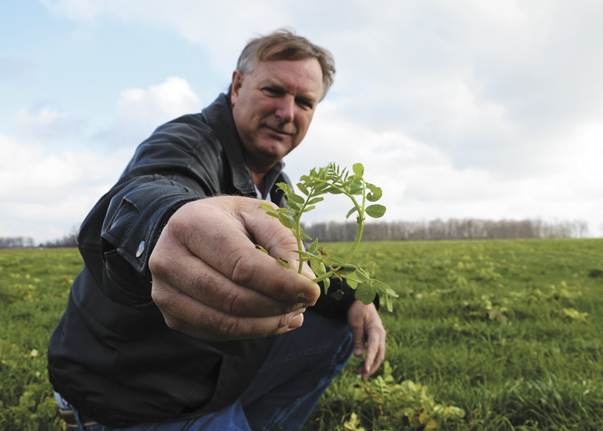Allen Dean was recently recognized as the No-Till Farmer of the Year by the Ohio No-Till Council for his dedication to the lack of tillage on his Williams County soybean and wheat farm.
|
|
Dean’s parents did not farm, but he learned to love working on the land at a young age and spent many hours helping on area farms.
Dean bought his first farm in the mid-1970s and then started expanding his acreage. With limited labor and funds, Dean soon saw the appeal of no-till farming.
“I started with conventional tillage, but all of that equipment was expensive,” he said. “I knew I could never afford all of that equipment, so I planted my first no-till corn field back behind the woods where no one could see it.
"That was 34 years ago on a 23-acre field. I was young and a lot of people were saying how this could never work, but within four years we were full blown into no-till with corn and beans. We knew we could make this work. We started with our loamier, better drained soils, but we found that we could make it work on any soils.”
In the late 1990s, also due to equipment and labor issues, Dean dropped corn from his rotation and focused on high management wheat and soybeans, along with cover crops. Now all of the soybeans he grows are non-GM and food grade for export to Japan from a Michigan company. Cover crops following wheat are planted with a no-till drill. Cover crops following soybeans are planted with a newly modified Miller Nitro self-propelled sprayer that has been converted into an air seeder.
“It has been a slow transition through all of these changes. We noticed the water was cleaner when we switched to no-till and that it improved more with cover crops,” Dean said. “Visually we have seen soil structure change with the cover crop mixes and you could visually see a huge difference in the beans this summer in the hot and dry weather.”
He said the early soybean varieties were hurt some by the drought, averaging in the 40-bushel-per-acre range. The later non-GM food grade soybeans averaged in the 60-bushel range. Wheat yields are often in the 100-bushel range.
The prolific nutrient levels in soil tests on the farm continue to reveal that the soils have been holding more nutrients. Dean applies urea, MAP and micronutrients on a field-by-field basis in the fall after wheat, based on his exciting soil test results. More nitrogen is applied to the wheat in two spring applications. Biosolids are also applied in some fields to bolster nutrients while cover crops are growing.
Dean loves to walk his fields of growing cover crops and dig in his soils to see the transformations that are taking place. The soil is alive and active, with bountiful earthworms, which is exactly what he wants to see. The changes in his soils and fields are also important in the growing debate over water quality and nutrient management.
“The algae problem in Lake Erie is a huge problem and water quality is important,” he said.

 Allen Dean holds some cahaba vetch he planted in this field on his Williams County farm with seven other types of cover crops. (Ohio Country Journal Photo)
Allen Dean holds some cahaba vetch he planted in this field on his Williams County farm with seven other types of cover crops. (Ohio Country Journal Photo)




Post a comment
Report Abusive Comment